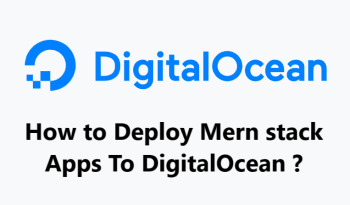More about Digitalocean kubectl
DigitalOceanDigitalOcean Kubernetes (DOKS) is a managed Kubernetes service that lets you deploy Kubernetes clusters without the complexities of handling the control plane and containerized infrastructure. Clusters are compatible with standard Kubernetes toolchains and integrate natively with DigitalOcean Load Balancers and block storage volumes.
Digitalocean kubectl is basically the official command-line tool for connecting to and interacting with the cluster in Kubernetes.
Here at FixWebnode, we shall look into Digitalocean kubectl.
Table of contents [Show]
More about Digitalocean kubectl ?
DigitalOcean Kubernetes clusters are typically managed locally or remotely via a management server.
The management machine requires:
- To connect to and interact with the cluster, use kubectl, the official Kubernetes command-line tool. The Kubernetes project provides instructions for installing kubectl on various platforms. Use kubectl version to verify that our installation is working and that our cluster is within one minor version.
- To manage config files and set context, use doctl, the official DigitalOcean command-line tool.
How to get a Token or Certificate of Authentication ?
To connect, we must first create a cluster and then add an authentication token or certificate to the kubectl configuration file.
1. Generate Using doctl.
i. Firstly, use the following command to configure authentication from the command line, substituting the name of our cluster:
$ doctl kubernetes cluster kubeconfig save use_our_cluster_name
ii. This downloads the cluster's kubeconfig, merges it with any existing configuration from ~/.kube/config, and takes care of the authentication token or certificate automatically.
When using recent versions of Kubernetes and doctl, this automatically generates a revocable OAuth token, and when using legacy versions, it automatically renews a certificate.
2. Download from the Control Panel
We can also manually download a cluster configuration file from the control panel:
- To begin, click on the Cluster's name.
- Then go to the Overview tab.
- Then, click Download Config File in the Configuration section to get the kubeconfig file.
- Name the file as -kubeconfig.yaml.
- Finally, put this file in the ~/.kube directory and use the --kubeconfig flag to pass it to kubectl.
How to Connect to the Cluster ?
- We can use kubectl to create, manage, and deploy clusters once the cluster configuration file is in place.
- We can also add DigitalOcean Load Balancers and block storage volumes to our cluster from this point.
[Need help in fixing Linux Servers issues ? We can help you. ]









